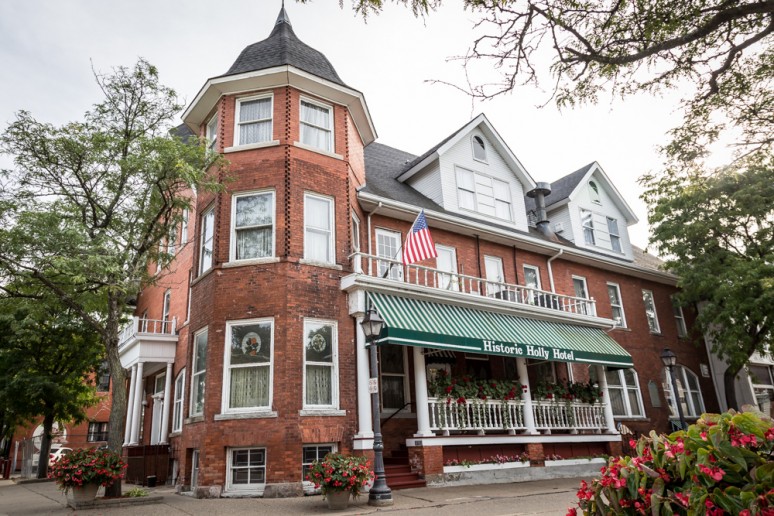 Ghost Stories from The Holly Hotel
Ghost Stories from The Holly Hotel
The historic Holly Hotel, well known for its August 29, 1908 visit from prohibitionist Carrie Nation, has also been referred to as “the most haunted building in Michigan.” There have been many reports of unexplainable incidents and ghost sightings there. Some of the Holly Hotel staff shared a few of their chilling tales with My City Magazine.
Steve McConnaughey has only worked at the Holly Hotel for three years, but he grew up in Holly and is very familiar with the history of the fine-dining establishment. There are longstanding reports of “mischief” in the kitchen. Every night at closing time, the kitchen is meticulously cleaned and everything is put in its place, Steve reports. But on many occasions, the staff returned the next morning to find a hatchet lying out on a counter.
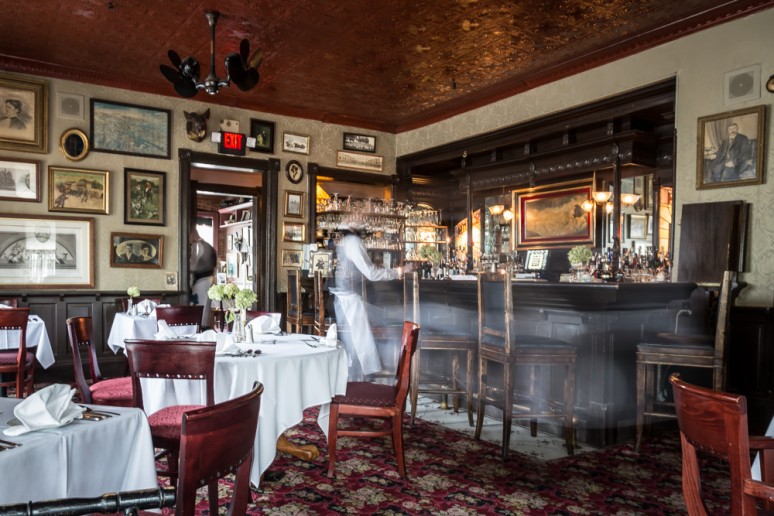 While in the women’s restroom, guests have reportedly heard a girl giggling in the first stall, asking for her mommy. “One guest realized not a single person was in there, so she ran out in a hurry,” Steve says with a laugh. While Steve has not experienced it personally, he says guests report having goosebumps, or hair standing up on their arms for no reason.
While in the women’s restroom, guests have reportedly heard a girl giggling in the first stall, asking for her mommy. “One guest realized not a single person was in there, so she ran out in a hurry,” Steve says with a laugh. While Steve has not experienced it personally, he says guests report having goosebumps, or hair standing up on their arms for no reason.
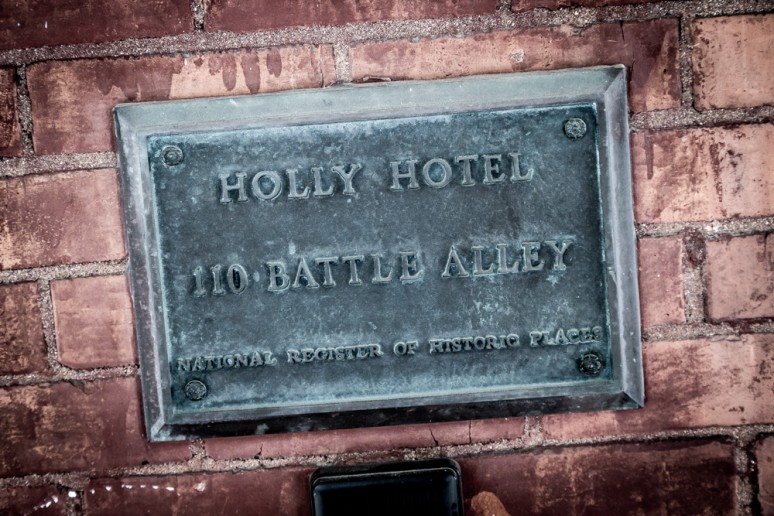 Christine (last name withheld) has been a server at the restaurant for 22 years. One day as she opened up the restaurant, her four-year-old son was with her. No one else was in the building, and as he was playing at the bottom of the stairs, her son pointed to the top of the stairs and asked her, “Mommy, who is that man?” “I looked, and there was no one there!” Christine shares. She remembers another time when she was waiting on a man and his grandson having tea in the lounge. “The little boy kept leaving the table and going upstairs, and his grandpa kept telling him to sit down and finish eating,” she recalls. The little boy said, “I was talking to my spirit friends. They wanted to join me, but I told them they couldn’t.”
Christine (last name withheld) has been a server at the restaurant for 22 years. One day as she opened up the restaurant, her four-year-old son was with her. No one else was in the building, and as he was playing at the bottom of the stairs, her son pointed to the top of the stairs and asked her, “Mommy, who is that man?” “I looked, and there was no one there!” Christine shares. She remembers another time when she was waiting on a man and his grandson having tea in the lounge. “The little boy kept leaving the table and going upstairs, and his grandpa kept telling him to sit down and finish eating,” she recalls. The little boy said, “I was talking to my spirit friends. They wanted to join me, but I told them they couldn’t.”
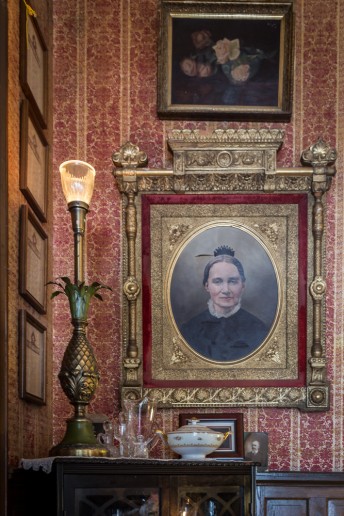 A few years later, Christine had her own ghostly encounter. As she walked past the dining car (a small dining room fashioned after a railroad car), she thought she saw something. “I thought I saw an older woman in a white dress, with white hair, wearing a white hat,” she says. “I stopped and looked back, but no one was there.” One of the servers told her, “Christine, you look like you just saw a ghost!” “I think I just did,” she replied. Still, she wondered if it really was a ghost. “It was so quick,” she adds.
A few years later, Christine had her own ghostly encounter. As she walked past the dining car (a small dining room fashioned after a railroad car), she thought she saw something. “I thought I saw an older woman in a white dress, with white hair, wearing a white hat,” she says. “I stopped and looked back, but no one was there.” One of the servers told her, “Christine, you look like you just saw a ghost!” “I think I just did,” she replied. Still, she wondered if it really was a ghost. “It was so quick,” she adds.
About six months later, Christine was serving a woman and her young son, who were sitting in the same spot where she thought she had seen a ghost. The mother said she liked bringing her son there because he was “sensitive.” “Do you see anything?” Christine asked him. The boy said, “Yes, I do. I see an old lady in a white dress. She has white hair.” Stunned, Christine asked, “Is she nice?” He replied, “Yes.”
Kate Ritter has worked at the Holly Hotel for eight years. To embrace the establishment’s spooky history, séances are held in October. The very first year Kate was working, it was the night before Halloween, and as the final séance was being held, she was startled by a very loud noise. “All of the windows in the attic had blown out!” she exclaims. “And, no one was up there. It was very strange.” She also has a picture on her phone that was taken by Alex, who was a waiter. 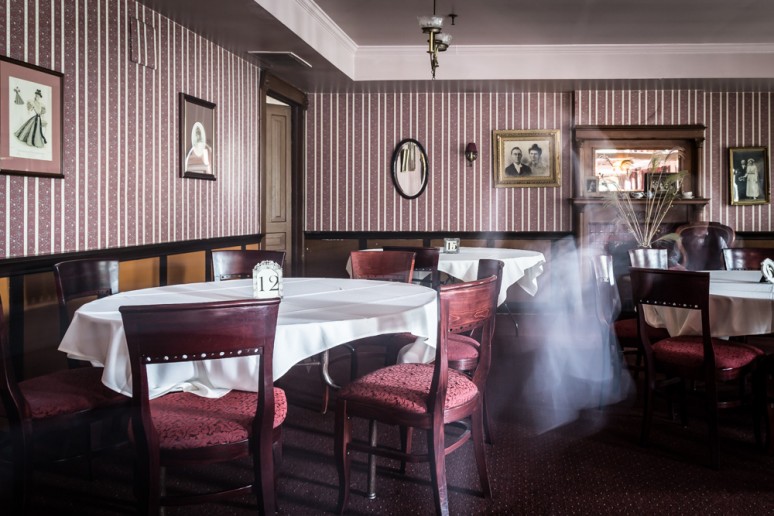 Two couples had been there to celebrate a birthday and asked him to take their photo. There was a mirror on the wall where the couples were sitting. In the photo, there was an image of a woman’s face in the mirror, her hair in a Gibson-style bun. “The face was not clear, but it was there!” Kate says.
Two couples had been there to celebrate a birthday and asked him to take their photo. There was a mirror on the wall where the couples were sitting. In the photo, there was an image of a woman’s face in the mirror, her hair in a Gibson-style bun. “The face was not clear, but it was there!” Kate says.
One restaurant manager (name withheld) had another ghostly story to tell. When she came to work, she always arrived early to do a walkthrough of the main dining room, checking the flowers and candles. One day, she saw the image of a man float by in full, Native American headdress. “It was as clear as day,” she says. “He was floating in the corner of the dining room with his arms folded! I looked away and it was gone. I was so spooked.”
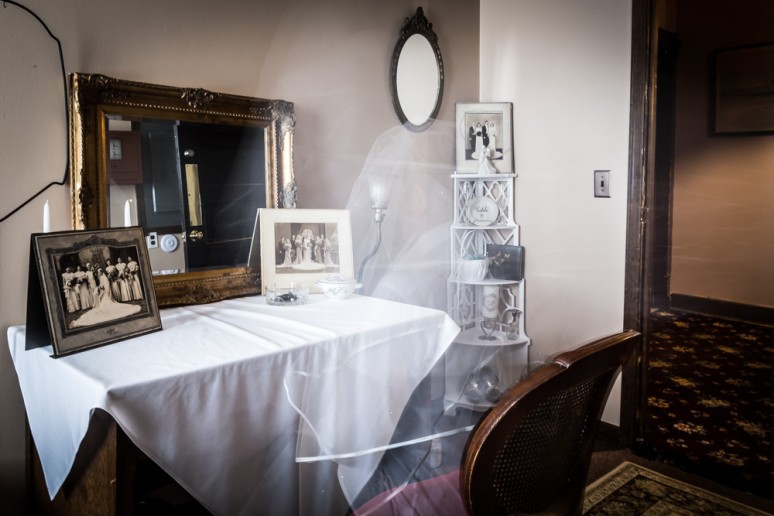 Whether you believe in ghosts or not, the Holly Hotel has many spooky events to enjoy in October, including a journey into the spirit world with séances the week before Halloween. You can be part of a real paranormal investigation during the Ghost Hunt on October 19 and 20. There is also the annual Witches’ Luncheon on October 29 and 31. Perhaps you will have a ghostly experience of your own …
Whether you believe in ghosts or not, the Holly Hotel has many spooky events to enjoy in October, including a journey into the spirit world with séances the week before Halloween. You can be part of a real paranormal investigation during the Ghost Hunt on October 19 and 20. There is also the annual Witches’ Luncheon on October 29 and 31. Perhaps you will have a ghostly experience of your own …
The Oak Grove Sanitarium
Imagining what a sanitarium for the mentally ill might look like might conjure up a vision of a stark, white room, with a single, bare lightbulb hanging from the ceiling – a place of nightmares and madness. This wasn’t the case at Flint’s Oak Grove Sanitarium, which was established in 1891 as the Oak Grove Corporation, a private hospital for treatment of mental disorders and addictions of the wealthy. It came into being through the efforts of some distinguished Michigan citizens who discovered there was a need for it. Some of the original stockholders included Justice H.R. Brown (U.S. Supreme Court), W.G. Vinton of Detroit, Henry M. Hurd (Superintendent, Johns Hopkins Hospital in Baltimore, MD), and Flint notables J. W. Begole, William Hamilton, and the Honorable W.W. Crapo.
Oak Grove Sanitarium was described in The History of Oak Grove Sanitarium as a “hospital for the treatment of nervous and mental disorders, and for the treatment of inebriates and those who had an addiction to opium, chloral, cocaine or other drug addictions.” Oak Grove was described as “charming” and a “thoroughly modern hospital.” During its 27 years of operation, Oak Grove cared for patients from every state in the Union and Provinces of Ontario and Quebec.
The building was constructed to look unlike a conventional institution and was to “provide a home-like setting for people of refined tastes, who were accustomed to the luxuries and conveniences of life.” The 60-acre property was purchased from the estate of the late Henry H. Crapo; the buildings surrounded on all sides by a grove of immense, native Oak trees. The natural beauty of the grounds was well-preserved. There were nine buildings in all, including the Administration Building (which housed the offices, reception hall, dining areas and the kitchen), Men’s Department, Ormeau Building (for acute men’s care), Noyes Amusement Hall, Electric Light and Power Building, Parterre Building (for acute women’s cases), and the Women’s Department. Rooms for the patients were described as “large, sunny and attractive” and were furnished in a manner that was “suited to meet the requirement of those of fastidious and cultural tastes.” Every floor had a spacious, beautifully furnished parlor. The dining rooms (two for each gender) were described as “sunny and commodious.”
According to its history, many patients came to Oak Grove to “avail themselves of the superior advantages it offered, including hydrotherapeutic and electric treatment for the relief of nervous prostration.” A number of highly-educated nurses worked there who were skilled in massage and modern treatment methods. Artesian wells supplied patients an abundance of pure water which was described as “alkaline mineral water of therapeutic value.” Water from those wells was also bottled and sold under the name “Prosit.” Milk was furnished by a private herd of hand-selected cows and the food was described as “the very best quality, delicately cooked and promptly served.”
The Noyes Amusement Building housed a bowling alley and gymnasium in the basement, billiard room, hydrotherapy rooms, Turkish baths (one cooling room and two hot rooms), Russian Room, Shampoo Room and the Lounging Room (library and reading room). This was made possible in January 1854 when Dr. James F. Noyes of Providence, RI (an original stockholder) turned in his shares to help fund construction of an amusement building.
In its first three years of existence, the hospital was under the direction of Dr. George C. Palmer, who died in 1894. Dr. C.R. Burr was the director at Oak Grove until it was sold in 1920 to the Flint Board of Education for the purpose of building a new high school. Oak Grove Corporation’s decision to sell the property was due to declining revenue. The buildings became the home of Flint Junior College, and Flint Central High School was built on the property in 1923. In an April 1920 Flint Journal article, it was reported that employees and staff of Oak Grove shared a $70,000 distribution of funds. The workers were called together in Noyes Hall where the money was apportioned to the staff based on years of service.
Additionally, it was reported on July 1, 1920: “Today marks the passing of Oak Grove Hospital after an existence of 29 years in Flint.” The buildings and grounds were formally purchased by the Board of Education on that day. Oak Grove patients were sent to other hospitals and the buildings were turned over to the teachers club of the city for dormitory purposes. Oak Grove Sanitarium was considered one of the leading sanitariums in America. The only original building left standing is the old apprentice building behind Whittier Junior High School, which was formerly Oak Grove’s stable.
Sources: Info for this article was found in the History of Oak Grove Sanitarium and an original promotional publication from Oak Grove Sanitarium at the Flint Public Library, as well as from Flint Journal articles at Sloan Museum.
Photography by Eric Dutro

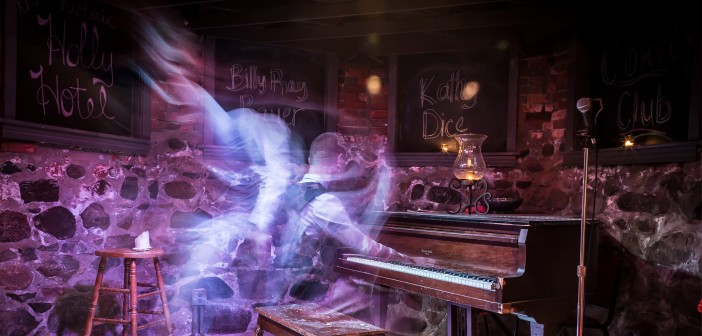

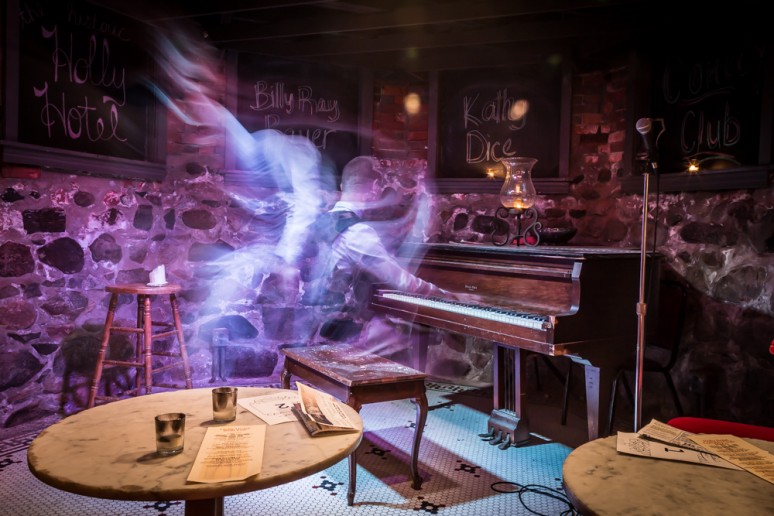












1 Comment
Holly Hotel in my city magazine